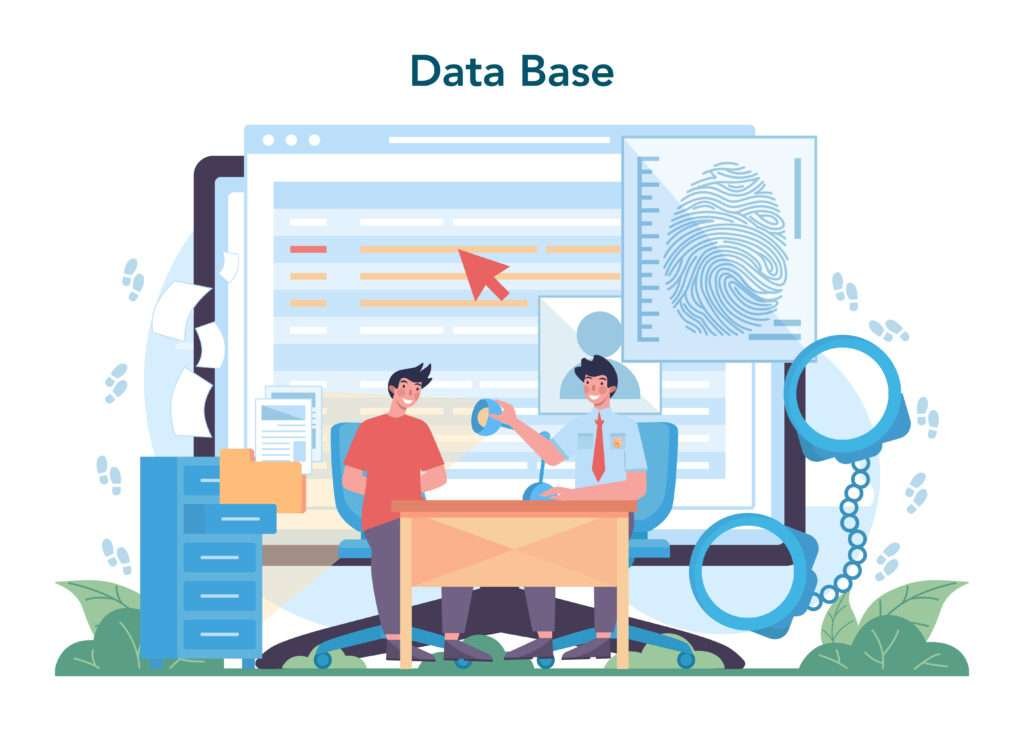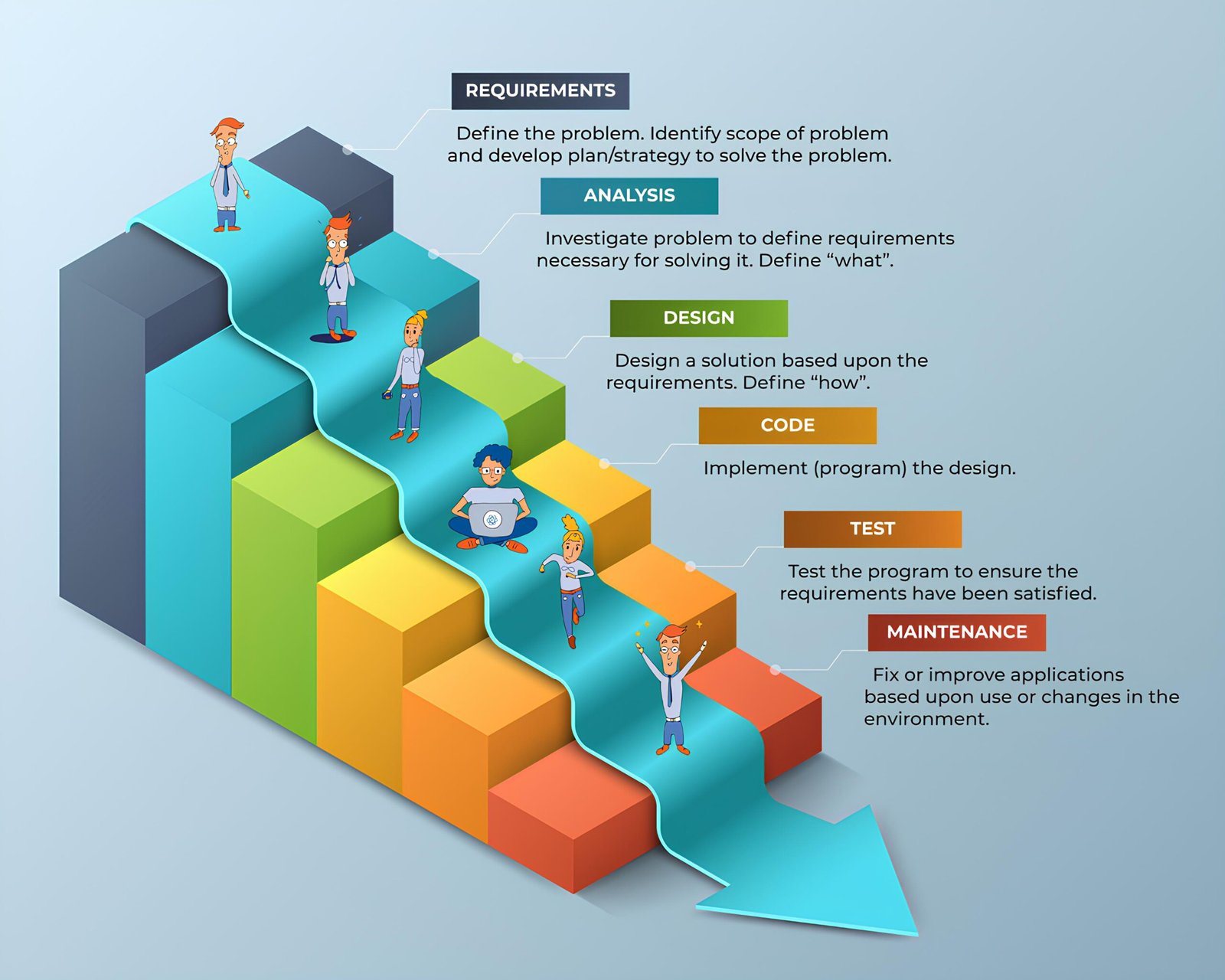Relational and Non-Relational Databases: Explained The Differences
Maaz Khalid
May 4, 2024
In today’s data-driven world, selecting the right type of database is a crucial decision for businesses and developers alike. The comparison between a relational and non relational database lies at the heart of this decision-making process. Understanding the differences, advantages, and limitations of each can significantly impact the efficiency and scalability of data management solutions.
Whether storing vast amounts of structured information or dealing with diverse, unstructured data sets, the choice between relational and non relational database systems plays a pivotal role in data architecture strategies.
This article aims to unravel the complexities of relational vs non relational database systems, providing a comprehensive overview of each type. It will delve into the foundational aspects of relational databases, followed by an exploration of non-relational databases, and systematically highlight the key distinctions.
The subsequent sections will discuss the pros and cons of relational and non-relational databases, aiding in a nuanced understanding of their suitability for various applications. Finally, it will guide readers through the process of choosing the right database for their needs, encapsulating this discussion with a conclusion that reinforces the critical takeaways.
Understanding Relational Databases
Definition And Structure
A relational database organizes data in a way that emphasizes the relationships between data points, which is fundamental for efficient data retrieval and management. At its core, the relational database utilizes tables to store information. These tables, or relations, consist of rows and columns, where each row represents a unique dataset known as a record, and each column represents a data attribute. This structure allows for the easy identification and access of data through a unique identifier for each row, known as a key.
The relational model, established by E.F. Codd at IBM in 1970, introduced a methodical approach to data management. This approach distinguishes between logical data structures, such as tables, views, and indexes, and physical storage structures. Such separation enhances the flexibility and efficiency of data management, as it allows database administrators to alter the physical storage of data without impacting the logical data structures accessed by users.
Common Examples
Relational databases are prevalent in various industries due to their reliability and structured query language (SQL) support, which facilitates complex queries and operations. Prominent examples include:
- Microsoft SQL Server: Developed by Microsoft, this database supports extensive data transaction processing with enterprise-grade data management.
- Oracle Database: Known for its robust feature set, Oracle Database is favored in environments where performance and scalability are critical.
- MySQL: This open-source relational database is widely used for web applications and supports a large number of concurrent users.
- PostgreSQL: Often referred to as Postgres, this open-source database is praised for its advanced features and compliance with SQL standards.
- IBM DB2: Used primarily in enterprise environments, DB2 supports a variety of data types and extensive scalability.
Cloud-based solutions are also increasingly popular, offering relational database services with enhanced flexibility and reduced maintenance. Examples include Amazon Relational Database Service (RDS), Google Cloud SQL, and Microsoft Azure SQL Database. These platforms provide comprehensive database management tools, allowing businesses to focus on innovation rather than infrastructure management.
By leveraging these relational databases, organizations can manage vast amounts of data efficiently, ensuring data integrity and accessibility. The relational model’s ability to handle complex data relationships and queries makes it a staple in data management strategies across various sectors.
Understanding Non-Relational Databases
Definition And Structure
Non-relational databases, commonly referred to as NoSQL databases, diverge significantly from traditional relational database structures. They do not use tables, rows, primary keys, or foreign keys. Instead, these databases employ a storage model that is optimized for the specific requirements of the type of data being stored, which may include JSON documents, key-value pairs, or graph structures. This flexibility allows for the management of data in formats that are more aligned with the needs of modern applications, particularly those dealing with large volumes of diverse, unstructured data.
Types And Examples
- Document Stores Document stores manage data in a flexible schema within a document-like format (often JSON, XML, or BSON). This type allows for complex querying and indexing of the document’s contents, making it ideal for content management systems and user profiles. Popular examples include MongoDB and Couchbase.
- Key-Value Stores The simplest form of NoSQL, key-value stores, function by storing data in arrays of key-value pairs. They are highly partitionable and allow for horizontal scaling, which is beneficial for applications requiring high availability and speed. Redis and DynamoDB are notable examples.
- Column-Oriented Databases These databases store data in columns rather than rows, which is optimal for querying large datasets and performing analytics. They offer advantages in speed and scalability when dealing with operations that involve aggregates over large datasets. Apache Cassandra and HBase are prominent column-family databases.
- Graph Databases Designed to treat relationships between data points as equally important to the data itself, graph databases are ideal for analyzing interconnected data. They store entities as nodes and relationships as edges, with both nodes and edges capable of holding properties. Neo4j and ArangoDB are examples of graph databases that facilitate complex relational queries.
These types of non-relational databases are chosen based on the specific needs of the application, such as the need for flexible schema, speed of access, or the ability to handle complex relationships and hierarchical data structures. Each type supports different data models and has its own unique set of characteristics and benefits, making them suitable for various kinds of applications from big data analytics to real-time web apps.
Key Differences Between Relational And Non-Relational Databases
Data Structure
Relational databases, often referred to as Relational Database Management Systems (RDBMS), organize data into tables which consist of rows and columns. Each table is designed with a primary key that uniquely identifies each row, facilitating the establishment of relationships between tables through foreign keys. This structured approach, defined by a schema, enables precise, complex queries and maintains data integrity and transactional consistency.
In contrast, non-relational databases, or NoSQL databases, utilize a variety of data models depending on their specific needs. These include key-value stores, document stores, column-family databases, and graph databases. Unlike relational databases, NoSQL systems do not require a fixed schema and often do not emphasize relationships between data elements. This flexibility allows for the storage and management of unstructured or semi-structured data, accommodating a wider variety of data types and structures.
Performance And Scalability
Relational databases are known for their strong data consistency and integrity. However, they can exhibit slower performance in scenarios involving large datasets or high transaction volumes due to their structured nature and complex query capabilities. Scaling relational databases typically involves upgrading server hardware (vertical scaling), which can be costly and has its limits.
Non-relational databases, on the other hand, are built to offer faster performance for specific use cases such as big data processing and real-time operations. They excel in environments where data volume and velocity are high but transactional consistency can be partially sacrificed for speed and scalability.
These databases are particularly adept at horizontal scaling, distributing data across multiple servers to handle increased loads effectively. This scalability makes them suitable for applications that need to manage large-scale, distributed data across cloud environments.
By leveraging different data structures and scalability approaches, relational and non-relational databases cater to distinct needs and scenarios in data management. While relational systems are ideal for complex queries and data integrity, non-relational models offer flexibility and performance advantages in handling vast amounts of diverse data.
Pros And Cons Of Relational Databases
Advantages
- Simplicity of Model
- Relational databases are characterized by a simple and intuitive model that uses tables, rows, and columns, making it easy to understand and use. The structure allows for straightforward SQL queries without the need for complex processing or querying mechanisms.
- Simplicity of Model
- Data Accuracy and Integrity
- With the implementation of primary and foreign keys, relational databases ensure high data accuracy and integrity. These keys prevent data duplication and maintain the relationships among data, ensuring consistency and reliability in data handling.
- Data Accuracy and Integrity
- Ease of Access and Use
- Users can easily access data through simple SQL commands. The ability to join tables and execute complex queries allows for flexible and efficient data retrieval and manipulation.
- Ease of Access and Use
- Security
- Relational databases provide robust security features. Administrators can control access to data by setting permissions on tables, thus ensuring that only authorized users can view or manipulate sensitive information.
- Security
- Normalization
- This process minimizes redundancy and dependency by organizing fields and table of a database. It ensures that the database is free from unwanted insertions, updates, and deletion dependencies.
- Normalization
- Flexibility for Modifications
- Relational databases allow for easy updates, deletions, and insertions of data without disrupting the existing database structure, making them adaptable to changing business needs.
- Flexibility for Modifications
Disadvantages
- Maintenance Complexity
- As the amount of data and the number of tables increase, maintaining a relational database can become complex and time-consuming, requiring significant resources for optimization and management.
- Maintenance Complexity
- Cost
- Initial setup and ongoing maintenance costs for relational databases can be high, particularly because they may require specialized hardware and software, as well as skilled technicians for effective management.
- Cost
- Physical Storage Limitations
- Relational databases are structured in rows and columns, which can lead to high physical memory requirements, especially as the volume of data increases.
- Physical Storage Limitations
- Scalability Challenges
- While relational databases perform well within a single server, they face challenges in distributed environments. Scaling horizontally across multiple servers can be problematic, affecting performance and data availability.
- Scalability Challenges
- Complexity with Large Data Sets
- Handling large and complex datasets can be cumbersome in relational databases due to their structured nature. The performance can degrade as the size of the data and the number of tables increase, leading to slower query responses and potential system bottlenecks.
- Complexity with Large Data Sets
By understanding these pros and cons, organizations can better assess whether a relational database system suits their specific data management needs and operational demands.

Pros And Cons Of Non-Relational Databases
Advantages
- Scalability and Performance
- Non-relational databases excel in scalability due to their scale-out architecture, which distributes data across multiple servers. This ability to handle large volumes of data and traffic efficiently is a key advantage over traditional relational databases.
- Scalability and Performance
- Flexibility in Data Modeling
- The flexible schemas of NoSQL databases allow developers to adapt the database structure easily for varied forms of data. This flexibility speeds up the development process and is particularly advantageous in dynamic environments like cloud computing.
- Flexibility in Data Modeling
- Simplified Development
- NoSQL databases store data in formats that are closer to how applications use data, reducing the need for transformations when data is stored or retrieved. This simplification can lead to faster development cycles and reduced complexity.
- Simplified Development
- Diverse Data Types Handling
- These databases support structured, semi-structured, and unstructured data, offering a versatile solution for modern applications that need to manage a variety of data types.
- Diverse Data Types Handling
- Community and Support
- Most NoSQL databases have robust developer communities that provide extensive support and continuously develop tools to enhance functionality and user experience.
- Community and Support
Disadvantages
- Lack of Standardization
- Each NoSQL system has its unique implementation and lacks a uniform query language, which can complicate the learning curve and integration with other systems.
- Lack of Standardization
- Consistency and ACID Compliance
- NoSQL databases generally do not support ACID (Atomicity, Consistency, Isolation, Durability) properties, which can lead to challenges in ensuring data integrity and consistency across transactions.
- Consistency and ACID Compliance
- Complexity in Data Organization
- The absence of a fixed schema can lead to data management challenges, making it difficult to ensure data quality and accuracy.
- Complexity in Data Organization
- Query Limitations
- Without standard SQL, querying NoSQL databases can be less intuitive and may lack the depth of query functionality available in relational databases, particularly for complex joins and transactions.
- Query Limitations
By weighing these advantages and disadvantages, organizations can determine the suitability of non-relational databases for their specific applications and data management requirements.
Choosing The Right Database For Your Needs
Factors To Consider
When selecting the appropriate database for a project, several critical factors must be evaluated to ensure optimal performance and alignment with business needs. Here are the key considerations:
- Data Volume and Complexity: The type, complexity, and volume of data a firm needs to manage are paramount. A database must efficiently handle structured, semi-structured, or unstructured data.
- Scalability: It’s vital to choose a database that can accommodate growth, both in terms of data volume and user load. This includes considering whether the database supports horizontal scalability to distribute loads across multiple servers effectively.
- Data Integrity and Security: Ensuring the accuracy, consistency, and security of data is crucial. For applications requiring robust data integrity, ACID-compliant databases are preferred. Security features such as encryption and access controls are also important to protect sensitive information.
- Performance Needs: Assessing the database’s performance in terms of read and write speeds, query handling, and real-time data processing capabilities is essential. Performance impacts the responsiveness and efficiency of applications.
- Cost Efficiency: Analyze both the initial and ongoing costs associated with the database. This includes licensing fees, hardware requirements, and operational expenses such as maintenance and staffing.
- Community Support and Resources: A strong community and support network can provide valuable help and resources. This includes access to documentation, forums, and updates which are crucial for troubleshooting and enhancements.
Use Cases
Understanding specific use cases for relational and non-relational databases can guide the decision-making process. Here’s how different needs map to database types:
- Relational Databases: Ideal for applications that require complex queries, transactional integrity, and structured data management. Use cases include financial systems, inventory management, and customer relationship management (CRM) systems.
- Non-Relational Databases: Best suited for scenarios that demand scalability, flexibility, and the ability to handle unstructured or semi-structured data. Typical applications include social media platforms, real-time analytics, and content management systems.
Decision-Making Questions
To further refine the choice between relational and non-relational databases, consider the following questions:
- For Relational Databases:
- Does the application involve complex data relationships that require joins?
- Is transactional integrity (ACID compliance) critical?
- Are structured data and complex queries predominant?
- For Relational Databases:
- For Non-Relational Databases:
- Is there a need for high scalability and performance with large data volumes?
- Does the application handle diverse data types that change frequently?
- Is rapid development and flexibility in data modeling a priority?
- For Non-Relational Databases:
By carefully analyzing these factors and understanding the specific requirements of the application, organizations can make informed decisions that align with their operational goals and data strategies.
Conclusion
Through a detailed exploration of relational and non-relational databases, this article has illuminated the unique features, benefits, and drawbacks of each, guiding readers towards making informed decisions based on their specific data management needs. From the structured, integrity-focused realm of relational databases to the flexible, scalable domain of non-relational databases, understanding these foundational differences is crucial for developers, businesses, and organizations as they navigate the complexities of data storage and retrieval.
The careful consideration of factors such as data volume, complexity, integrity, performance needs, and cost efficiency plays a pivotal role in selecting the right database technology that aligns with one’s operational goals and requirements.
Ultimately, the choice between relational and non-relational databases is not purely binary but rather dependent on the nuanced demands of the application in question. Whether managing complex transactions with stringent consistency requirements or accommodating rapid growth and diverse data types, the selected database technology should enhance operational efficiency and support the strategic objectives of the project.
By embracing the insights shared, readers are equipped to make well-informed database decisions that propel their data architecture strategies forward, ensuring robust, scalable, and efficient data management solutions.
Subscribe to our newsletter to receive future updates on Technology, Artificial Intelligence (AI), and Tech Trends. Explore our categories to find more relevant stuff. Stay informed and motivated with our most recent insights!



